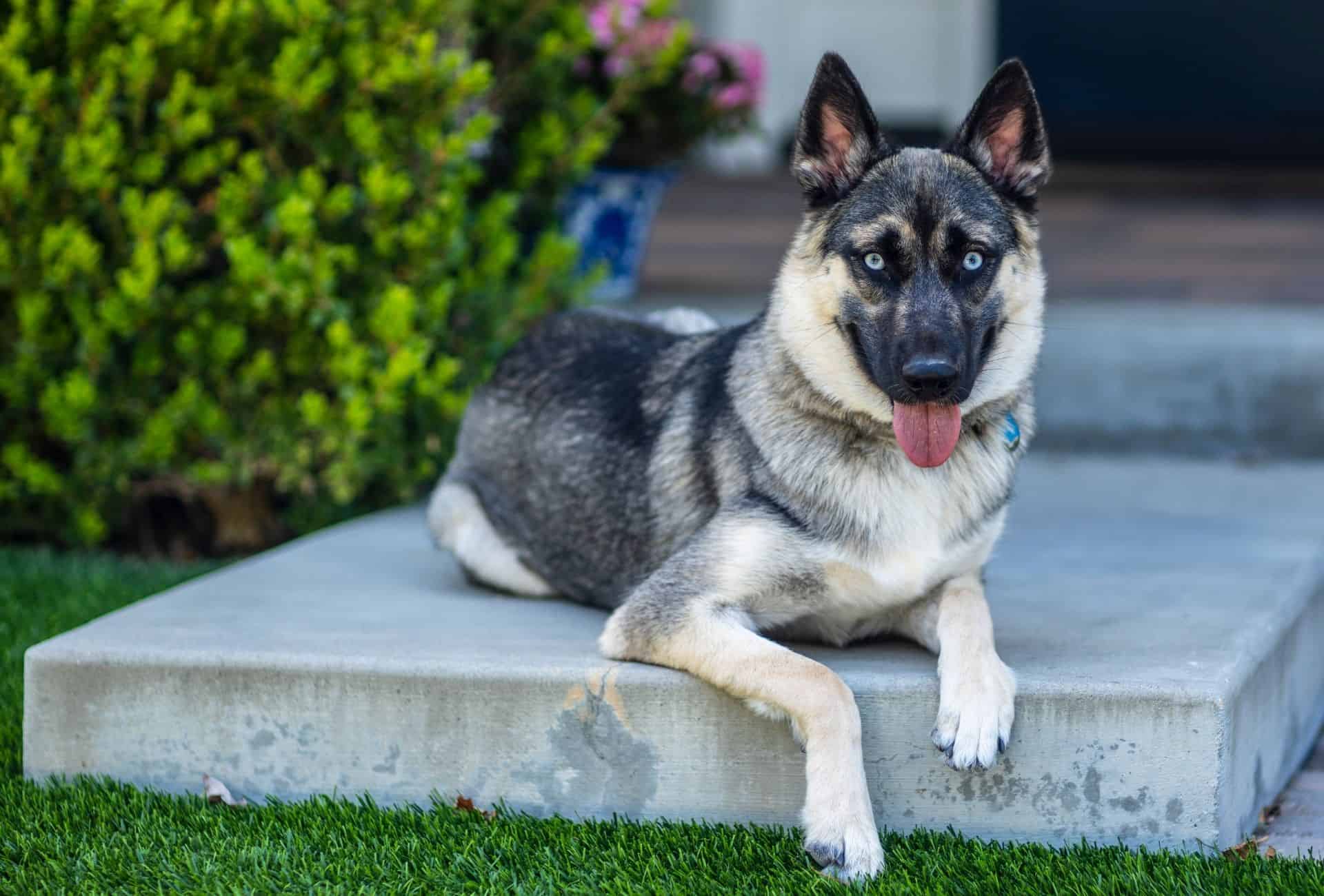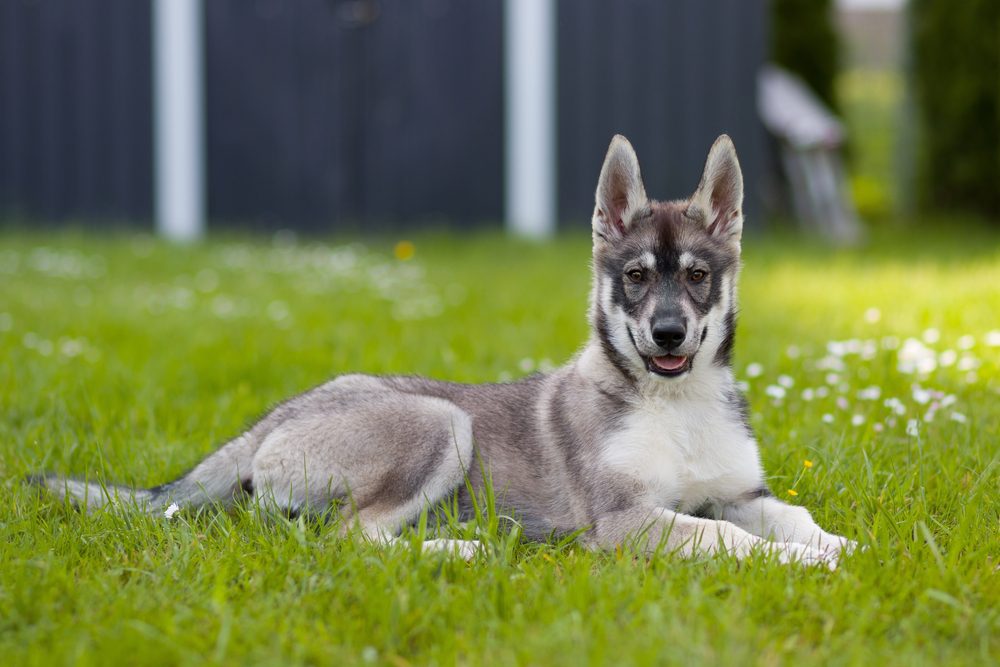German Shepherd Husky Mix: Understanding this breeds characteristics, needs
The German Shepherd Husky Mix provides the best of both breeds – strong and smart – with the independence of Huskies and fierce loyalty of German Shepherds. While considered a medium-sized working dog, the German Shepherd Husky Mix is often classified as a large herding dog.
So, if you are planning to bring this breed into your home, it is important to understand its unique characteristics and needs.
Therefore, this is everything you need to know about this widely popular German Shepherd Husky Mix.
Table of Content hide 1 What is German Shepherd Husky Mix? 2 German Shepherd Husky Mix dog 2.1 Temperament 2.2 Training and socialisation 2.3 Exercise and diet 2.4 Health concerns 2.5 Grooming and maintenance 3 How to identify a German Shepherd Husky MixWhat is German Shepherd Husky Mix?

The German Shepherd Husky Mix, also known as “Gerberian Shepsky”, is a hybrid dog breed that results from the crossbreeding of a German Shepherd and Siberian Husky. The unique combination of this breed means it inherited some of the best traits of its parents – the intelligence and loyalty of the German Shepherd with the striking appearance and endurance of the Siberian Husky.
READ ALSO: Fluffy cows: Cattle breed known for their thick, luxurious fur
While the origin of this breed of dog remains unknown, some sources reported that this breed became popular in the late 20th or early 21st century. Like other mixed breeds, the goal was to create a dog that encompassed the best qualities of both parent breeds.
The German Shepherd Husky Mix is typically a medium-sized dog with a well-balanced build, erect ears, and a bushy tail. Its coat colour varies, often featuring a mix of its parents’ coat colours.
Each litter typically produces six to eight puppies, each of which may look different. Some of the breed may have heterochromia (different coloured eyes) from their Husky parent, while others will receive the longer snout of their German Shepherd parent.
The German Shepherd Husky Mix can make an excellent companion for active individuals or families who are willing to invest time in training, socialization, and physical activity for this lively breed.
German Shepherd Husky Mix dog

Below are the characteristics of a typical German Shepherd Husky Mix dog.
Temperament
The German Shepherd Husky Mix dog is renowned for its intelligence, energy, and sociability. It is also known to be a quick learner, making it responsive to training, but it may also exhibit independent and stubborn tendencies. However, “Shepskies” are generally known to be friendly and outgoing and enjoy the company of their human families.
The German Shepherd Husky Mix dog has a social nature which makes it suitable as a household pet. However, it is also known to display some predatory tendencies. This is why it is important to train them at an early age to be able to interact well with their human families and other pets.
Additionally, their energy levels are naturally high, meaning they require constant exercise. The German Shepherd Husky Mix is also a hardworking dog, making it the perfect companion and working dog.
ALSO READ: Piebald deer: Rare beauties who are gems of the woodlands
Exercise and diet
A German Shepherd Husky Mix has a high energy level and requires plenty of physical activity to stay healthy and happy. Exercises include daily walks, runs, and playing fetch. If you can, enrol your dog in obedience training classes or agility courses to develop its physical and mental stimulation.
In terms of diet, a German Shepherd Husky Mix needs all the required nutrients, including protein, vitamins and minerals. Avoid foods that contain fillers, artificial preservatives and by-products. Also, avoid overfeeding your dog which can make it fat and cause joint problems. Limit treats, keep your dog active and serve regular meals instead of feeding them all the time.
Health concerns
A German Shepherd Husky Mix is generally known to be a healthy dog. However, it is predisposed to some of the same conditions that the German Shepherd and Siberian Husky also face. This means it may be prone to health issues, such as the following:
- Cataract – opacity in the lens of the eye that causes difficulty in seeing.
- Corneal Dystrophy – affects the cornea or outer transparent portion of the eyeball, especially in females.
- Progressive Retinal Atrophy (PRA) – a degenerative eye disorder that eventually causes blindness from the loss of photoreceptors at the back of the eye.
- Hip Dysplasia – a hereditary health condition which is the improper fitting of the femur into the hip joint’s pelvic socket.
- Elbow Dysplasia – mostly found in large breeds, it is a heritable condition that results from differential growth rates among the elbow’s three constituent bones, causing joint instability.
- Gastric Dilatation-Volvulus (bloat) – a life-threatening situation predominantly affecting deep-chested large dogs, bloat occurs when the stomach distends due to gas or air and subsequently twists.
Grooming and maintenance
Like all dogs, your Shepsky should be taken to the vet for regular checkups. Shepskies are prone to gain weight, despite their high energy levels. So, constant exercise should not be taken for granted.
Trim your dog’s nails before they get too long – at least once or twice a month. Also, check the ears for debris and pests daily and clean them as recommended by your vet.
Its oral health should not be overlooked. Many of these breeds are prone to dental issues. So, brush your dog’s teeth regularly, according to your vet’s instructions. Do not forget to bath your dog regularly with a gentle dog shampoo that is designed for its coat type.
How to identify a German Shepherd Husky Mix
There is no standard appearance of the German Shepherd Husky Mix. The appearance varies, however, some trends are generally associated with this breed.
First, the German Shepherd Husky Mix is usually bigger than the Siberian Husky and smaller than the German Shepherd. Also, this breed has a double coat that sheds year-round with medium-length fur. The coat comes in various colours such as white, grey, blue or sable-coloured. Many Shepskies have multi-coloured black and white, red and white, grey and white and tan and white coats.
In terms of facial appearance, a German Shepherd Husky Mix’s features depend on the parent. However, this breed generally has floppy ears during puppyhood that erect over time. It also has almond-shaped blue, green or brown-coloured eyes with a sharp muzzle. Some dogs have heterochromia, featuring brown and blue or green and brown eye colours. They may also have masks similar to the German Shepherd.
Finally, the German Shepherd Husky Mix combines its stunning appearance with an incredibly athletic body. This physical capability makes it the perfect companion for long walks and other physical activities.
READ ALSO: Mini Aussiedoodle: Intelligent, playful breed that’s excellent pet for families
ncG1vNJzZmivp6x7tLfAm5isoF6YvK57xp6pppmeYsCpsc%2BhnKucXZ3CtLfYZqSisF8%3D